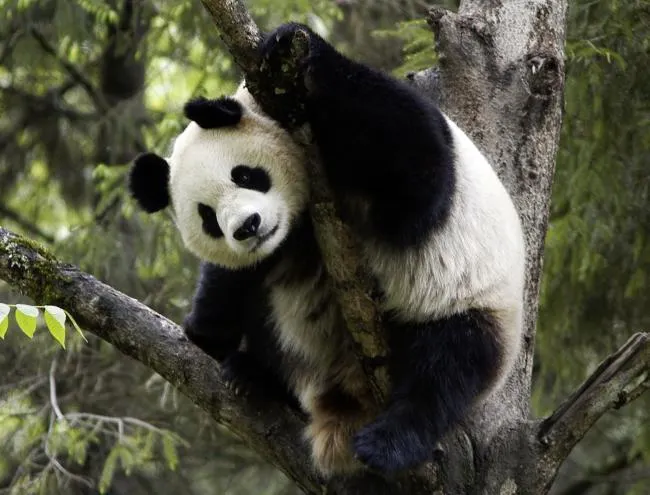Interesting facts about Pandas

Pandas are one of the most beloved animals in the world, known for their distinctive black-and-white fur, round faces, and gentle demeanor. Native to China, these iconic creatures are symbols of peace, conservation, and national pride. Though once endangered, the giant panda (Ailuropoda melanoleuca) is now a global conservation success story. This article explores everything you need to know about pandas—from their biology and behavior to their role in the wild and surprising facts you may never have heard.
1. Pandas Are Not Just Cute—They’re Unique Bears
Although pandas look like fluffy teddy bears, they are real bears in the Ursidae family. However, they’re quite different in lifestyle and behavior from their relatives like grizzlies or polar bears.
2. Where Pandas Live
Giant pandas live in the bamboo forests of the mountainous regions of central China, primarily in:
- Sichuan Province (most prominent)
- Shaanxi Province
- Gansu Province
These regions provide the cool, damp climate and dense bamboo growth pandas need to thrive.
3. A Bamboo-Based Diet
Despite being classified as carnivores, pandas eat 99% bamboo:
- They consume 26–84 pounds (12–38 kg) of bamboo daily
- Their strong jaws and molars crush even the toughest stalks
- Occasionally, they may eat small animals or birds
Bamboo lacks many nutrients, so pandas must eat a lot and spend 10–16 hours each day feeding.
4. How Big Are Pandas?
- Adults weigh 220–300 pounds (100–135 kg)
- Length: 4–6 feet (1.2–1.8 m)
- Males are larger than females
Panda cubs are born tiny and pink, weighing only 3–5 ounces (85–140 g)—about the size of a stick of butter!
5. Why Are Pandas Black and White?
Pandas’ fur helps with:
- Camouflage: White fur blends with snow; black limbs blend with shade
- Communication: Their unique markings help pandas recognize each other
- Thermoregulation: Fur color may assist with heat absorption or reflection
6. Panda Behavior
- Solitary by nature—each adult panda claims its own territory
- Communicate using scent marking, vocalizations, and body language
- Though slow-moving, they can climb trees and swim well
- Pandas are mostly active at dawn and dusk
7. Panda Reproduction
- Breeding season: March to May
- Females are fertile for just 2–3 days per year
- Gestation: Around 95–160 days
- Usually give birth to 1 or 2 cubs, but only one is usually raised in the wild
In captivity, twin cubs are often switched between incubators and mom to ensure both survive.

8. Pandas and Conservation Success
- Giant pandas were once critically endangered, with fewer than 1,000 left in the wild
- Through conservation, habitat restoration, and captive breeding, their population has rebounded
- In 2016, pandas were downgraded from “endangered” to “vulnerable” on the IUCN Red List
- Around 1,800 wild pandas now exist, with more than 300 in captivity
9. Panda Diplomacy
China practices “panda diplomacy”, lending pandas to foreign zoos as goodwill ambassadors:
- All pandas outside China are on loan
- Cubs born abroad must eventually return to China
- Rental fees go to panda conservation programs
10. Lifespan of Pandas
- In the wild: 15–20 years
- In captivity: Up to 30 years
The oldest panda ever recorded was “Jia Jia,” who lived to 38 years old in Hong Kong.
11. Pandas Have a ‘Thumb’
Pandas don’t have an opposable thumb like humans but have an enlarged wrist bone that functions like a thumb. This allows them to grip bamboo efficiently.
12. Fun and Surprising Facts About Pandas
- Pandas do handstands while scent marking trees to spread their scent higher.
- Baby pandas are blind and helpless at birth—they open their eyes after 6–8 weeks.
- Despite being solitary, they communicate frequently through bleats, honks, growls, and barks.
- Panda cubs are extremely playful and curious, often tumbling and climbing during their first year.
- Pandas have six fingers (including the false thumb) and walk pigeon-toed.
- Each panda has unique fur patterns, especially the black patches around their eyes.
- Their teeth and jaw muscles are some of the strongest among mammals.
- Wild pandas mark territory with a musky secretion from scent glands under their tails.
13. Pandas in Pop Culture
Pandas have appeared in:
- Cartoons (like Kung Fu Panda)
- Logos (WWF’s panda logo)
- Merchandise, toys, and documentaries
- International news whenever a panda is born in captivity
Their universal cuteness has made them global conservation icons.

Conclusion
Pandas are much more than cute faces—they are survivors, ecological engineers, and ambassadors for wildlife conservation. Their journey from the brink of extinction to becoming a conservation success story is a testament to what coordinated global efforts can achieve. By continuing to protect their habitats and understand their needs, we help secure a future not just for pandas—but for countless other species that share their mountain homes.



